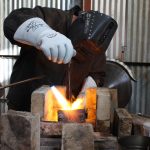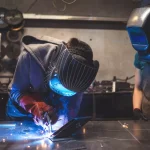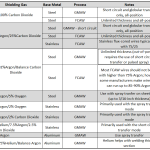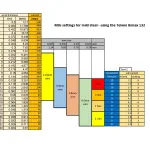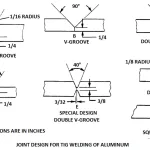MIG Welding(Gas metal arc welding) is a versatile process that is used widely to welding aluminum. Direct current electrode positive polarity is used, and an inert gas is used to provide shielding. The process can be adapted for out-of-position welding as well.
MIG Welding Aluminum
Welding Town
Shielding Gas
Aluminum is a reactive metal. Hence an efficient shielding is necessary when welding it. Generally argon and helium, or a mixture of these, are used as shielding gas in MIG welding of aluminum. Both gases have their own advantages. The bead profile and penetration obtained in the aluminum metal are different for helium and argon.
Argon provides efficient shielding, and makes for a smooth and stable operation of the arc. The bead is narrower and more convex than the one obtained with helium. The central portion of the bead penetrates deeper, while the flanks are shallower.
At certain amperages though, helium is the preferred gas because it yields a deeper penetration of the arc. The arc is hotter with helium. Also, a given change in arc length produces a greater fluctuation in arc voltage. The bead profile looks flatter and wider. The penetration is, on an average deeper than argon, and is uniform across the width under the bead.
A mixture of helium and argon produces a mixture of advantages of both gases. A mixture containing 75% helium and 25% argon is widely used in MIG welding of aluminum, as it provides benefits of both gases, without any undesirable features of either gas. The arc is smooth and stable, and penetration is uniformly deep under the bead.
Welding Parameters
The following table shows recommended welding parameters when various base metal thicknesses of aluminum are welded with GMAW process.
The angle of the torch is important in MIG welding of aluminum. An angle of 30° is suggested.
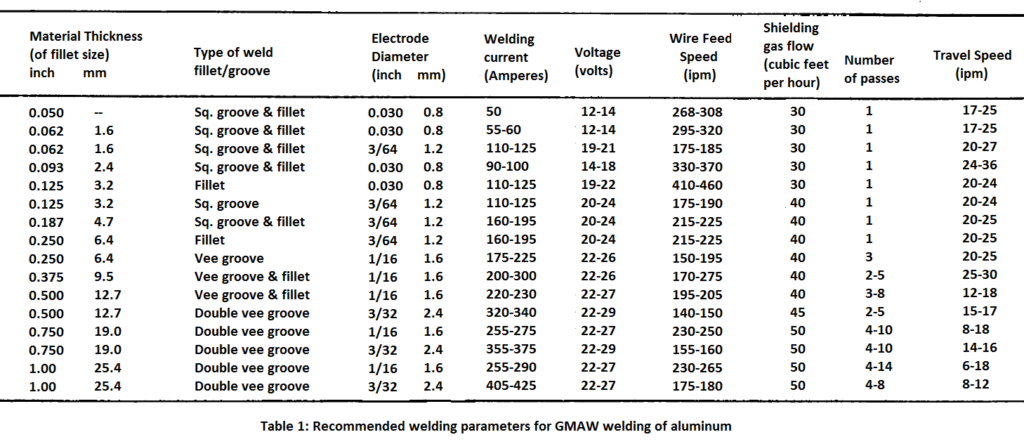
Regarding the shielding gas, argon is recommended for thin and medium thick materials. For thicker materials, 50% argon with 50% helium can be used. When welding is done in overhead position, the welding current shown in the above table should be decreased by 10%, and rate of flow of shielding gas should be increased by 10%. Also, when a backing material is used, the current should be increased by 10% to 15%.
Welding Technique
Cleanliness is important when aluminum is welded, regardless of the process. When MIG welding is employed, it is worth keeping the following things in mind:
- A stick-out of 1 inch (25 mm) work well for MIG welding aluminum.
- In order to avoid crater cracks, run-on/run-off tabs should be used. This is not always possible though. A commonly used technique is to strike the arc 1 inch (25 mm) ahead of the starting point, and bring it backwards to the starting point. Thereafter, it can proceed in the originally intended direction.
- Likewise, before stopping, the arc may be brought back in reverse for an inch, and then taken to the finishing point. The travel speed can be increased in the final stretch to limit the size of the weld pool.
- High travel speeds with stringer beads are recommended when welding aluminum with gas metal arc welding.
- When equal base metal thicknesses are being joined, the work angle of the welding gun should be equal on both sides. When dissimilar thicknesses are joined, it is better to point the arc towards the heavier section.
- While welding is done in horizontal position, the gun should be pointed slightly upwards.
- When welding root passes, slightly lower current in comparison to the recommended parameters in the table above may be adopted. This helps in achieving root fusion without excess penetration. In subsequent passes, higher heat input can be used.
- The quality of MIG weld depends a lot on the efficiency of wire feeding equipment. The drive rolls used must be appropriate for the size of the wire, and for the grade of the aluminum wire sed. Use nylon-type liners in cable assemblies.
- The welding gun is mostly water cooled, except the ones used for low amperages.
- The power source may be of constant current (CC) power source type with matching voltage sensing wire feeder. This type of power source is preferred for welding on thick base metal thicknesses.
- The power source may also be a constant voltage (CV) power source type, with constant speed wire feeder. This type is preferred for thin base metal thicknesses. With C-V source, it is easier to initiate the arc and control it.
- Sometimes, a constant current power source with constant speed wire feeder is also used. This provides a stable power output and a high quality weld.
Joint Design
The recommended edge preparation designs that may be adopted for MIG welding aluminum are shown in the figure below.
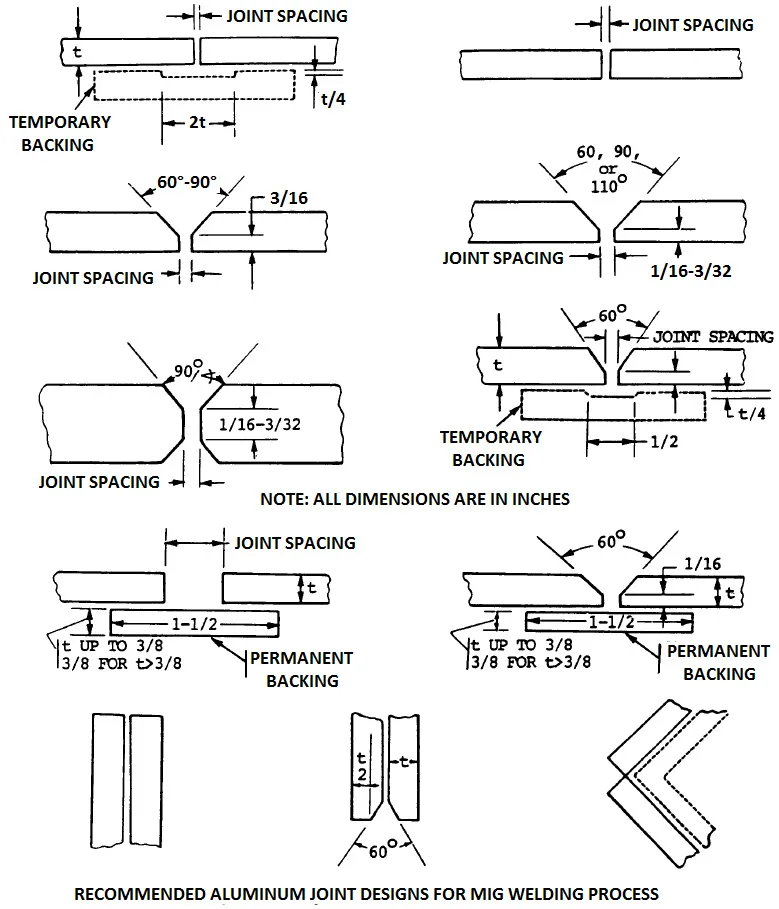
So, this was a little about MIG welding aluminum. Please share your thoughts in the comments section below.


![Welding vs. Brazing vs. Soldering [ What is the main difference ] 2 Welding vs. Brazing vs. Soldering [ What is the main difference ]](https://www.021208.com/wp-content/uploads/2024/05/welding-1-150x150.jpg)

